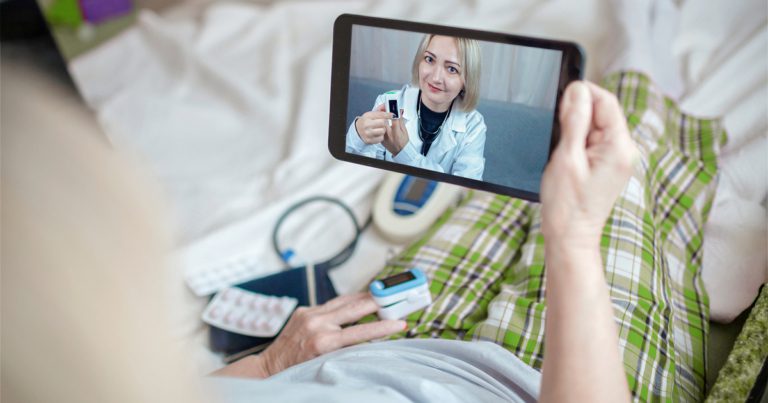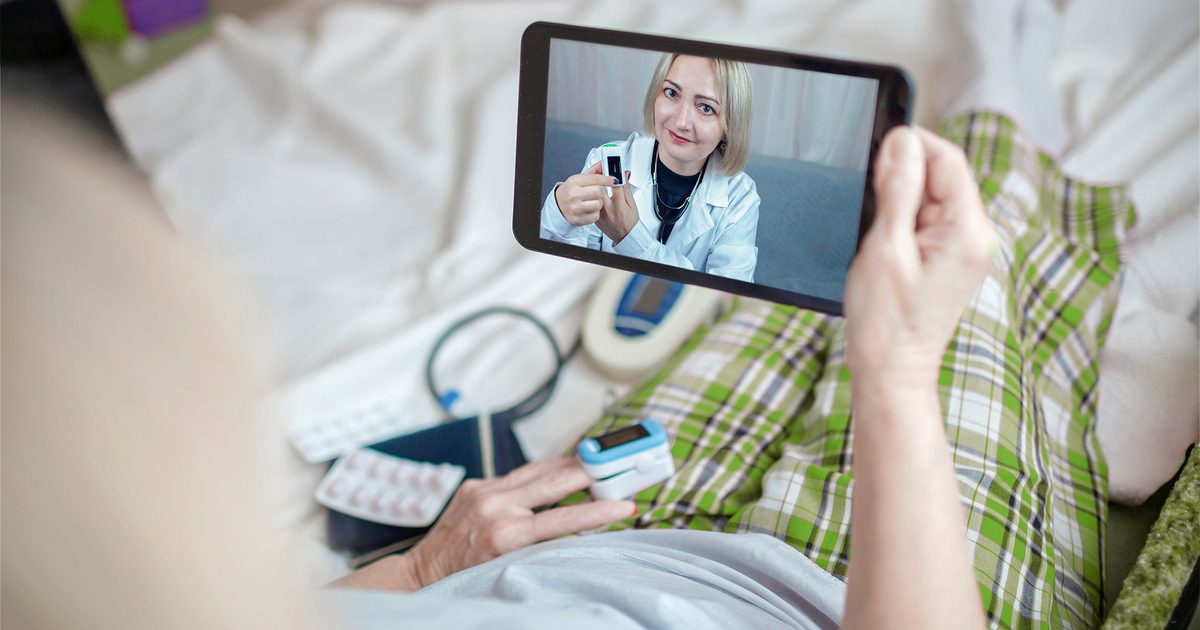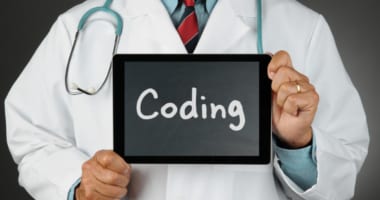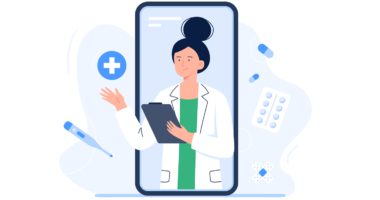There has been a lot of buzz about remote physiologic monitoring (RPM) and recently remote therapeutic monitoring (RTM). But what exactly are RPM and RTM, and can they really be implemented in allergy practices? Do they improve care for patients, and will you get reimbursed for these services? We spoke to allergists using these services to find out. For more info, attend our webinar on RPM and RTM for Allergists on June 15!
Remote Physiologic Monitoring (RPM)
RPM is not new. RPM CPT codes have been in place for more than two years and allow physicians to provide and be paid for monitoring of patient physiological data (e.g., heart rate, respiratory rate, blood pressure, weight, spirometry) that is automatically transmitted electronically via a device for treatment management. These services can be provided under general physician supervision, which means a physician’s clinical staff or an outside company can provide the services without the physician being in the office or on-site. We spoke with two allergists who are using RPM – and getting paid for it – at their practice/health system.
Jeff Langford, MD, has an independent practice and began using RPM at the start of the pandemic. He targeted two types of patients for this service: 1) severe asthmatics using biologics, who needed careful monitoring, and 2) immunodeficiency patients, whom he wanted to keep away from urgent care. He now has more than 200 patients enrolled in RPM.
Each RPM patient receives a digital thermometer, a hand-held spirometer, a pulse oximeter (due to the pandemic) and a scale. A blood pressure cuff is also provided to patients with hypertension. Readings are automatically sent electronically to his office via a standalone smart hub, which works on a cellular network. No internet connection is required. At first, he used an in-house nurse to monitor the data. However, when staffing became tight, he outsourced this function to the RPM company. The nurse there monitors data and looks for abnormal trends according to parameters set by Dr. Langford. She has access to the practice EHR and can document notes and send messages. She regularly checks in on patients and responds quickly when data looks abnormal. “Having dedicated staff to monitor and respond to this data is key,” noted Dr. Langford.
Dr. Langford bills codes 99453, 99454, 99457 and 99458 for RPM services as appropriate per the chart below. Medicare does pay for RPM services, and all commercial payers have reimbursed him for these codes. Some commercial plans require patient copays and/or coinsurance. However, in his state Medicaid has not consistently covered RPM codes. Coverage depends on the plans in your state; check with your commercial payers to see if these services are covered.

| RPM Code | Description | Notes |
|---|---|---|
| 99453 | RPM set-up and patient education on use of equipment (billable once per episode) | Data must be monitored at least 16 days. |
| 99454 | Supply of the device for daily recording or programmed alert transmissions (each 30 days) | Data must be monitored at least 16 days. |
| 99457 | RPM treatment management – first 20 minutes (once every 30 days) | Requires a live, interactive communication with patient/caregiver. Report 99457 one time regardless of the number of physiologic monitoring modalities performed in a given calendar month. |
| 99458 | RPM treatment management – additional 20 minutes | Requires a live, interactive communication with patient/caregiver. |
| 99091 | Collection and interpretation of physiologic data digitally stored and/or transmitted by the patient and/or caregiver to the physician or other qualified health care professional – 30 minutes (once every 30 days) | Do not report in conjunction with 99457, 99458. |
| Note: Devices used must be medical devices as defined by the FDA, and RPM treatment management services must be used to manage a patient under a specific treatment plan. When multiple medical devices are provided to a patient, the services associated with all the medical devices can be billed only once per patient per 30-day period. CPT 99453 can be billed only once per episode of care where an episode of care is defined as “beginning when the remote physiologic monitoring service is initiated and ends with attainment of targeted treatment goals.” | ||
Using RPM, Dr. Langford and his nurse were able to identify COVID-19 patients from irregular data and get them antibody infusions and other treatments as needed. They also identified a COPD patient in need of oxygen and ensured he saw his pulmonologist and received oxygen the same day. And they have shared BP data with other specialists when relevant. Another advantage? “We are, on occasion, able to get meaningful pre/post bronchodilator studies at home as part of this program’s usual monitoring, mentored by the nurse. This, when we haven’t done nebulizers at all in two years,” said Dr. Langford.
Tania Elliott, MD, FACAAI, chair of the College’s Taskforce on Telehealth and Technology, is chief medical officer of virtual care at Ascension. Ascension has been using RPM since 2014 and has monitored more than 40,000 patients for chronic disease. Respiratory rate, blood oxygen level and inhaler use are among the things they are monitoring remotely. They charge for RPM and have found Medicare and some commercial payers have reimbursed for these services.
Ascension has a centralized nurse monitoring team that manages all escalations and “red alerts.” The RNs adhere to clinical guidelines developed by a clinical quality committee of specialists (cardiologists, pulmonologists, etc.) so they can operate at the top of their license. Where appropriate, RNs escalate alerts directly to the physicians’ practices. Each practice has their own workflow regarding who the initial point of contact is (on-call physician, physician champion of the program, physician who placed the order, etc.). All physicians are trained on the escalation protocols and pathways to ensure standardization.
“We have seen a reduction in hospital admissions and ER utilization, as well as medical cost savings as a result of RPM,” said Dr. Elliott. “We are reviewing the CMS guidance on RTM as well, and plan to provide these services in the future.”
Remote Therapeutic Monitoring (RTM)
RTM services are new; Medicare began paying for them on January 1 of this year. Unlike RPM, RTM services represent the review and monitoring of data related to signs, symptoms and functions of a therapeutic response. These include respiratory system status, therapy adherence and therapy response. Data can be self-reported by the patient, as well as transmitted automatically by a device. RTM requires the use of a medical device as defined by the FDA (i.e., not merely a wellness device). According to CMS, self-reported RTM data via a smartphone app or online platform classed as Software as a Medical Device (SaMD) may qualify for payment.
An example of RTM for an asthma patient could be a rescue inhaler equipped with a medical device that monitors when the patient uses the inhaler, how many times a day it is used, how many puffs/doses are used each time, and the pollen count and environmental factors at that time and location. The allergist could use this data to evaluate the patient’s therapeutic response and adherence to the asthma treatment plan. The allergist would get a better understanding of how well the patient is responding to the medication, as well as other social and environmental factors impacting the patient’s respiratory system.
CPT codes for RTM are detailed below:
| RTM Code | Description | Notes |
|---|---|---|
| 98975 | RTM set-up and patient education (billable once per episode) | Used to report RTM services during a 30-day period. Data must be monitored at least 16 days. |
| 98976 | Respiratory monitoring (technical component; each 30 days) |
Data must be monitored at least 16 days. |
| 98977 | Musculo-skeletal monitoring (technical component; each 30 days) |
Data must be monitored at least 16 days. |
| 98980 | RTM treatment management – first 20 minutes (professional service; each 30 days) |
Requires at least one interactive communication with patient/caregiver. |
| 98981 | RTM treatment management – each additional 20 minutes (professional service) | Requires at least one interactive communication with patient/caregiver. |
| Note: Devices used must be medical devices as defined by the FDA. An episode of care is defined as beginning when the RTM service is initiated and ends with attainment of targeted treatment goals. | ||
When providing RTM, a physician or advanced practice provider must directly supervise clinical staff who are furnishing the treatment management part of the service, which means they must be present in the office when clinical staff is performing the remote service. As a result, it’s virtually impossible to have the service provided by third-party vendors; instead, practices will have to provide these services in-house.
Priya Bansal, MD, FACAAI, is a member of the Practice Management Committee and an independent practitioner. She began using RTM more than a year ago when she learned RTM codes would soon be covered by Medicare, although she hasn’t yet billed for these services. “I believe RTM may be easier for some allergy practices to implement than RPM because we are evaluating for therapeutic response, which is part of our routine care paradigm,” said Dr. Bansal.
How do patients accomplish the data transmission? They can use an app that works with medical device inhalers and monitors medication compliance to transmit that data to the physician. “Currently, musculoskeletal and respiratory monitoring are allowed, but hopefully, in the future, RTM can be used for other disease states like measuring attack and maintenance medication use with hereditary angioedema and immunotherapy monitoring for reactions and responses in food allergy and allergic rhinitis,” said Dr. Bansal.
Dr. Bansal demos the respiratory apps for patients on her phone in the office. About 50% of her patients download a relevant app, and of those, 30% actually use it. When patients use them, the apps send data to the office when the patient transmits it. MAs, RNs and Dr. Bansal work together to review the data.
Dr. Bansal has seen multiple benefits for patients. The biggest benefits are:
- Tracking medication compliance.
- Medication efficacy and compliance demonstrate the usefulness of medication. This helps get prior authorizations approved for specialty meds if needed.
For more information about medical devices and apps that can be used for RPM and RTM, view the November 2021 Annals of Allergy, Asthma & Immunology article “Methods to Engage Patients in the Modern Clinic.” If you’re investigating RPM or RTM for your practice, keep in mind both require physician and staff time to educate and enroll patients, review data and follow up with patients. Many offices experiencing staffing challenges may not be in a position to add new functionality with a bare bones staff. Working with an outside vendor might help solve the staffing issue with RPM, but that is not currently an option for RTM.


